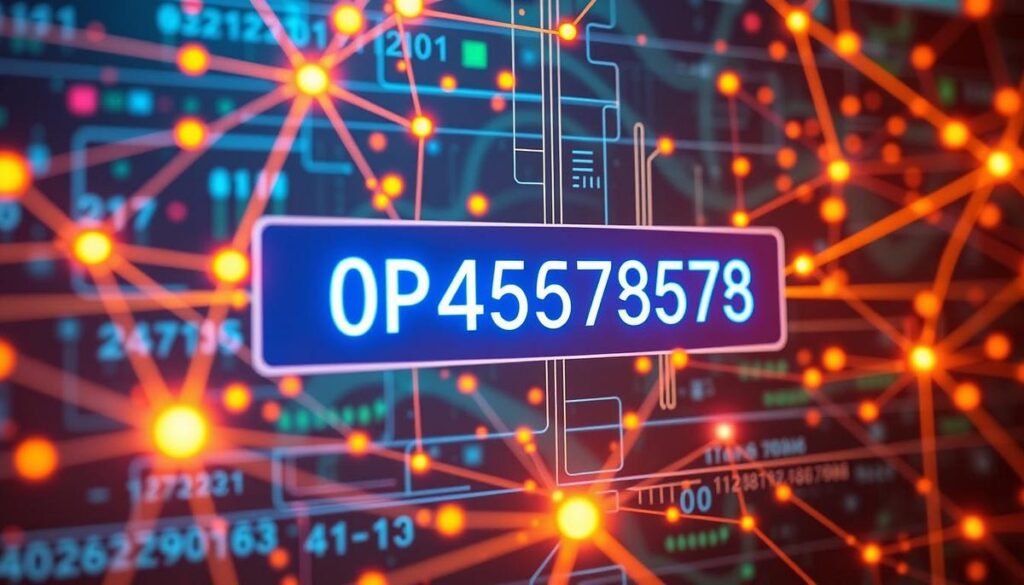Introduction
In today’s digital world, private networks are the backbone of our communication systems, enabling devices to interact securely within a local environment. Among the myriad of private IP addresses, 192.168.28.57 has gained prominence due to its specific configurations and applications, especially when combined with the port 5421. This blog aims to unravel the intricacies of 192.168.28.57:5421, offering insights into its setup, security considerations, troubleshooting, and advanced applications.
Whether you’re a tech enthusiast looking to optimize your home network or a professional managing IT infrastructure, this guide is tailored for you. By the end, you’ll have a clear understanding of 192.168.28.57:5421 and how to leverage it for your needs.
Section 1: Understanding Private IP Addresses
What are Private IP Addresses?
Private IP addresses are unique identifiers used within private networks, enabling devices to communicate without exposing them to the broader internet. These addresses fall within specific ranges defined by the Internet Assigned Numbers Authority (IANA). The ranges for private IP addresses are:
- 10.0.0.0 to 10.255.255.255
- 172.16.0.0 to 172.31.255.255
- 192.168.0.0 to 192.168.255.255
The Role of Private IPs in Networking
Private IP addresses facilitate internal communication between devices within a local area network (LAN). By using private IPs, organizations can conserve public IP addresses and enhance security. This segregation allows devices to communicate without the risk of exposure to outside threats.
What Makes 192.168.28.57 Special?
The address 192.168.28.57 is a part of the 192.168.x.x range, which is commonly used for home and office networks. It serves as a private IP address that can be assigned to any device connected to a network, such as computers, printers, and routers. This address can be configured for various applications, making it a versatile choice in network management.
Understanding the Importance of Port Numbers
The addition of :5421 to the IP address indicates the specific port that directs traffic to a particular service. Ports are like channels that help manage multiple data streams over a single IP address. Each service running on a device can use a different port number, ensuring organized data handling.
Section 2: Setting Up 192.168.28.57:5421

Initial Configuration Steps
Setting up 192.168.28.57:5421 involves a series of steps to ensure that devices can communicate effectively over the network. Here’s a step-by-step guide:
- Accessing Your Router’s Settings:
- Open a web browser and enter your router’s IP address (usually 192.168.1.1 or 192.168.0.1) in the address bar.
- Log in using your admin credentials. If you haven’t changed them, the default username and password can usually be found on the router itself.
- Assigning the IP Address:
- Navigate to the DHCP settings in your router’s interface.
- Assign the IP address 192.168.28.57 to the desired device. You may need to identify the device by its MAC address.
- Configuring the Port:
- Locate the port forwarding section in your router settings.
- Add a new port forwarding rule that directs traffic from port 5421 to the IP address 192.168.28.57.
- Specify the protocol (TCP, UDP, or both) based on your application’s requirements.
- Testing Your Setup:
- Use a command prompt (Windows) or terminal (Mac/Linux) to ping 192.168.28.57 to check connectivity.
- Open a web browser and enter http://192.168.28.57:5421 to see if you can access the configured service.
Verifying Successful Configuration
Once the configuration is complete, it’s essential to verify that everything is functioning correctly:
- Ping Test: Use the ping command to ensure the device responds. Open Command Prompt and type
ping 192.168.28.57. - Accessing Services: Open a web browser and input http://192.168.28.57:5421. If a service is running on this port, you should see a response or interface related to that service.
- Check Router Logs: Access your router’s logs to see if there are any connection attempts to 192.168.28.57:5421.
Section 3: Enhancing Security for 192.168.28.57:5421
The Importance of Network Security
While setting up 192.168.28.57:5421 can enhance your network’s functionality, security must be a priority to prevent unauthorized access and potential breaches. Insecure configurations can lead to vulnerabilities that hackers can exploit.
Best Practices for Securing Your Network
- Use Strong Passwords:
- Ensure your router and devices connected to 192.168.28.57 use strong, unique passwords. Avoid default passwords and consider a mix of uppercase, lowercase, numbers, and special characters.
- Enable Two-Factor Authentication (2FA):
- If your devices support 2FA, enable it for an added layer of security. This requires a second form of verification beyond just a password.
- Configure Firewalls:
- Use a firewall to monitor incoming and outgoing traffic to and from 192.168.28.57:5421. Configure rules to block unauthorized access attempts.
- Regular Software Updates:
- Keep the firmware of your router and the software of connected devices updated to protect against known vulnerabilities. Set devices to automatically update when possible.
- Disable Unused Services:
- If there are services or ports that you do not use, disable them. This reduces the number of potential entry points for attackers.
Risks of Leaving 192.168.28.57:5421 Unsecured
Leaving 192.168.28.57:5421 unsecured can expose your network to several risks:
- Unauthorized Access: Hackers can gain entry to your network, leading to data breaches or the hijacking of devices.
- Malware Infections: Insecure devices can become infected with malware, which may spread throughout the network.
- Data Loss: Sensitive information can be compromised or stolen if proper security measures are not in place.
Section 4: Advanced Applications of 192.168.28.57:5421
Utilizing 192.168.28.57:5421 in Business Contexts
Businesses can leverage 192.168.28.57:5421 for various applications, such as:
- File Sharing: Configuring a file server at this address allows employees to access shared documents securely.
- Internal Databases: Companies can set up databases that staff can access for critical operations, ensuring quick retrieval of information.
IoT and Smart Home Devices
In the realm of Internet of Things (IoT) and smart home technology, 192.168.28.57:5421 can serve as a hub for various devices. For example:
- Security Cameras: Users can access live feeds from security cameras configured to use this IP and port.
- Smart Thermostats: Homeowners can manage and monitor energy usage through an app that communicates with devices at this address.
Remote Access and VPN Use
Setting up secure remote access for devices using 192.168.28.57:5421 is essential for employees who work from home or are frequently on the go. Here’s how to do it:
- Use a Virtual Private Network (VPN): Configure a VPN that allows remote users to connect securely to the network where 192.168.28.57:5421 is hosted.
- Dynamic DNS Services: If your network IP changes frequently, consider using Dynamic DNS to map a domain name to your changing IP, making it easier for users to connect remotely.
Section 5: Troubleshooting Common Issues with 192.168.28.57:5421

Common Problems and Solutions
As with any network configuration, issues can arise. Here are some common problems related to 192.168.28.57:5421 and how to resolve them:
- Connectivity Issues:
- Symptoms: Unable to ping or access 192.168.28.57:5421.
- Solutions: Check physical connections, ensure the device is powered on, and verify router settings.
- IP Conflicts:
- Symptoms: Multiple devices showing the same IP address.
- Solutions: Change the IP address of one device to avoid conflicts. Use DHCP reservations for consistent assignments.
- Device Not Responding:
- Symptoms: Accessing 192.168.28.57:5421 yields no response.
- Solutions: Ensure that the service running on this port is operational. Restart the device if necessary.
- Firewall Blocking Access:
- Symptoms: Unable to reach 192.168.28.57:5421 due to security alerts.
- Solutions: Check firewall settings and rules to ensure traffic is allowed through port 5421.
Quick Troubleshooting Steps
- Restart Devices: Sometimes, simply restarting your router and connected devices can resolve connectivity issues.
- Check Logs: Look at router logs for any errors or unauthorized access attempts that could indicate configuration issues.
- Run Diagnostic Tools: Use built-in network diagnostic tools to identify and resolve issues quickly.
Section 6: Frequently Asked Questions (FAQs)
What is 192.168.28.57:5421 used for?
192.168.28.57:5421 is commonly used for various applications, including internal file sharing, IoT device communication, and as a part of a local server setup in both personal and business networks.
How do I know if a service is running on port 5421?
You can use tools like netstat or online port checkers to determine if a service is actively listening on port 5421. In the command prompt, you can type netstat -a | find "5421" to check if it’s active.
What security measures should I take for 192.168.28.57:5421?
Implement strong passwords, enable two-factor authentication, configure firewalls, regularly update software, and disable unused services to enhance security for 192.168.28.57:5421.
Can I access 192.168.28.57:5421 remotely?
Yes, you can set up remote access through a VPN or configure your router to allow remote connections, ensuring that proper security measures are in place.
What should I do if I cannot access 192.168.28.57:5421?
Check your network connections, ensure the service is running, verify that the correct port is open on the firewall, and troubleshoot any potential IP conflicts.
Conclusion
As we conclude this extensive guide on 192.168.28.57:5421, it’s clear that understanding this private IP and its associated port can significantly enhance your networking experience. The capabilities offered by 192.168.28.57:5421 extend beyond simple device communication; they can streamline operations in personal and business contexts alike.
By following best practices in configuration and security, you can ensure a reliable and secure networking environment. Whether you’re setting up IoT devices, accessing shared files, or managing remote connections, 192.168.28.57:5421 has the potential to be an invaluable asset in your digital toolkit.
We hope this guide empowers you to leverage this IP address to its full potential, fostering a secure and efficient networking environment. If you have any further questions or need assistance with your network setup, don’t hesitate to reach out.
Happy networking!
